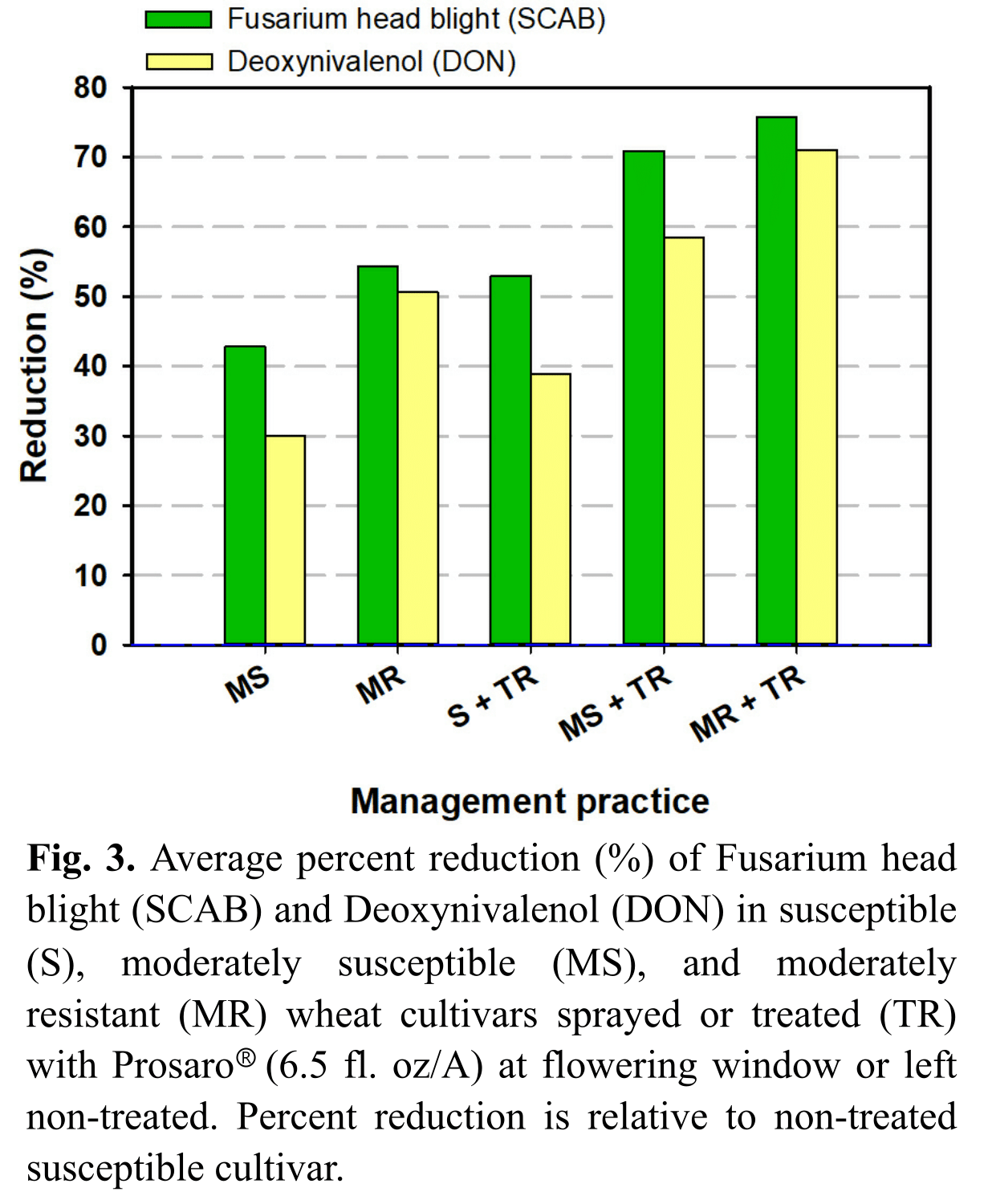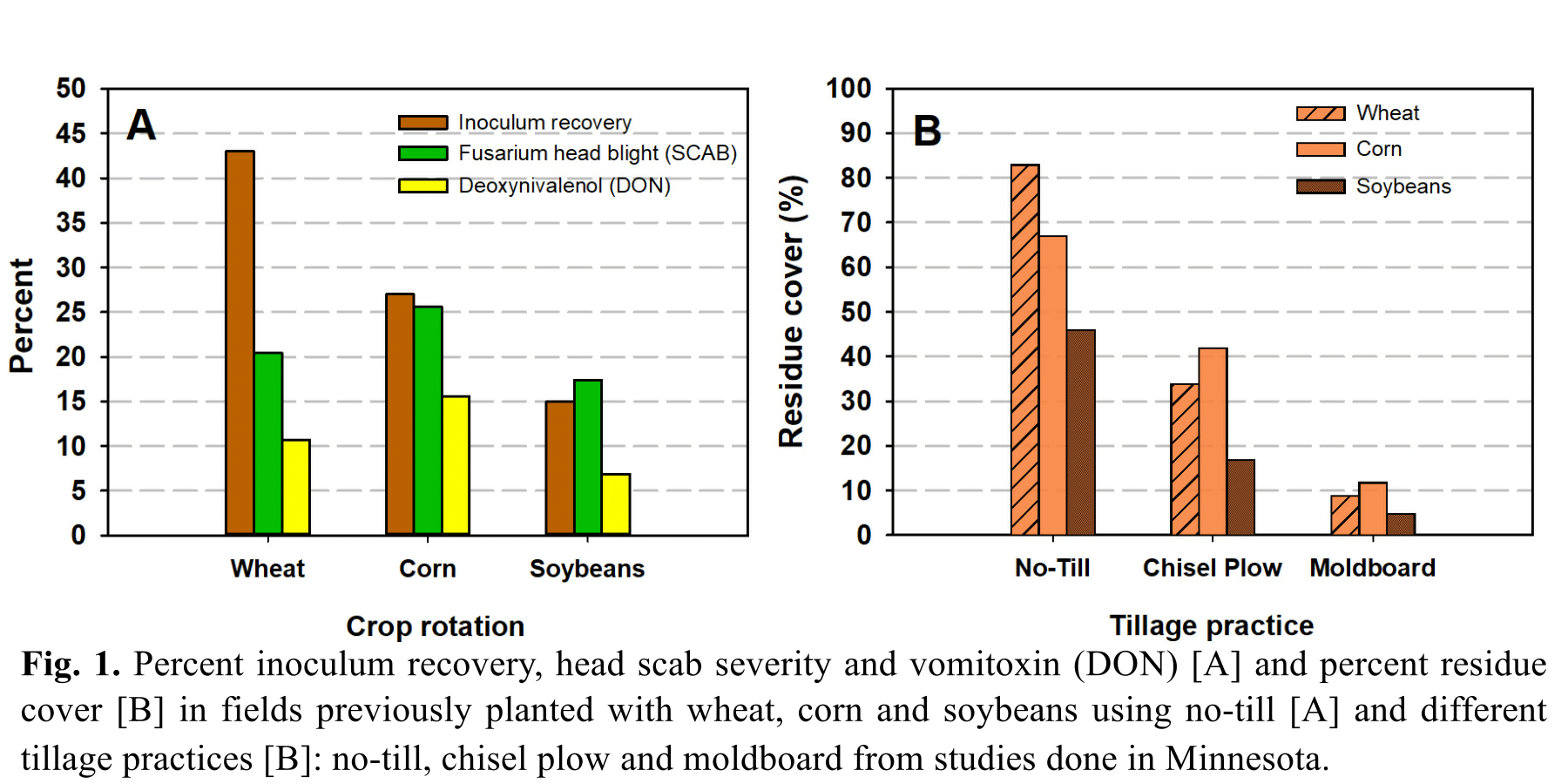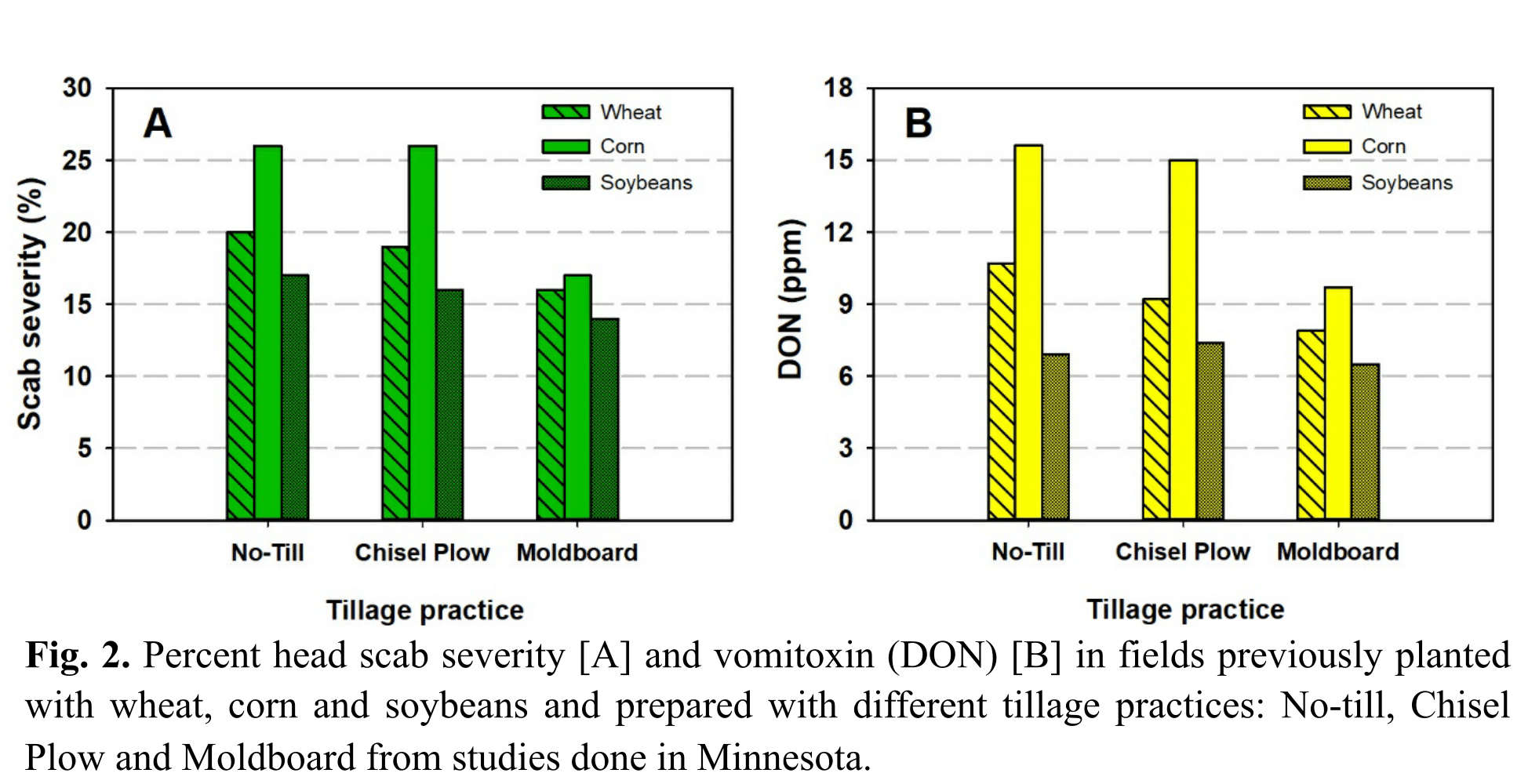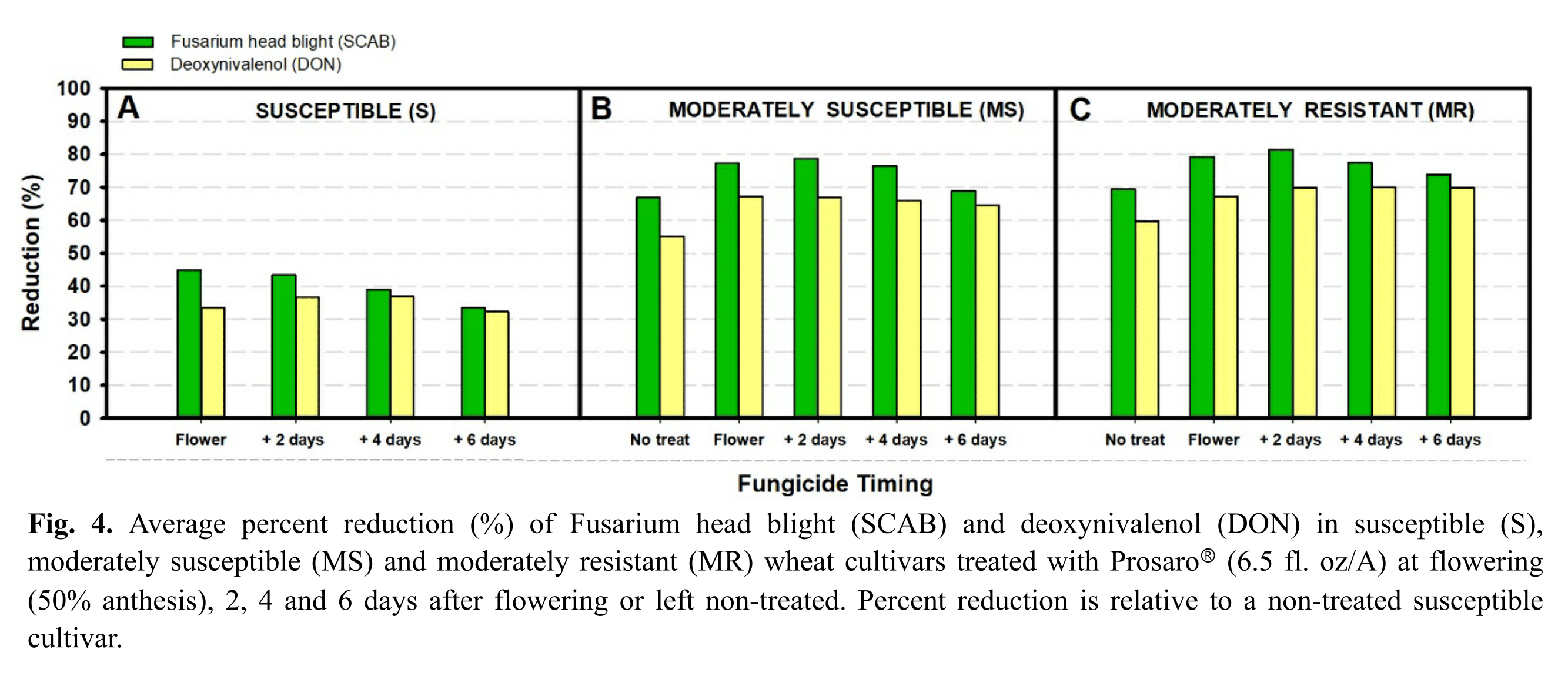ScabSmart: Integrated Management
Integrated Management
Images on this page can be clicked to view a larger version, then use your back button to return to this page.
The most effective strategy to minimize grain and quality losses associated with scab and DON is an integrated management approach. First, farmers are recommended to avoid planting susceptible wheat and barley cultivars into fields previously planted with other small grains or corn. Second, crop rotation with a non-host crop (e.g. soybeans and alfalfa) is advised even when moderately susceptible or resistant cultivars were planted in previous season. Before planting a new crop, burying crop residue using minimum to conventional tillage is advised to reduce the primary inoculum source, particularly in fields with a large amount of corn stubble. In addition, when wet weather and warm temperatures are expected during barley head emergence and wheat flowering to early grain filling period, the application of triazole fungicides are warranted to prevent and reduce scab development. For all these reasons an integrated management approach that includes crop rotation, host resistance, chemical control and cultural practices offers the most effective outcome to minimize scab and DON.
Crop rotation and residue management aid in improving scab/DON management. Studies from Minnesota indicate that fields previously planted with soybeans had lower fusarium inoculum, scab and DON compared to fields previously planted with corn or wheat (Fig. 1A). To reduce corn and wheat residue, debris can be buried or removed by plowing with a moldboard or chisel plow. Complete or partial burial can reduce inoculum and scab/DON (Fig 1B). Figure 1 shows results from three different ground tillage practices (no-till, chisel plow and moldboard) on percent residue cover in fields previously planted with wheat, corn and soybeans.Both moldboard and chisel plowing resulted in a higher reduction of debris in all three field-crop scenarios compared to the common non-till practice.
Planting wheat following soybeans resulted in lower scab and DON than planting after wheat or corn, regardless of tillage practice. However, if wheat or barley is planted following wheat or corn, chisel or moldboard plowing is recommended to break down and bury residue thus reducing scab and DON (Figure 2).

Planting moderately susceptible (MS) or moderately resistant (MR) cultivars is another effective prevention practice to reduce scab development and DON content in wheat and barley grain. Under scab favorable conditions (warm and wet weather), the application of triazole fungicides to MS/MR cultivars at the appropiate flowering window (early flowering and up to 6 days later) will result in a higher reduction of scab (>70%) compared to treated susceptible (S) cultivars (53%) or when MS and MR varieties are left nontreated (43 and 54%, repectively). Similarly, DON reduction is higher in fungicide treated MS cultivars (58%) and MR cultivars (71%) than in treated susceptible (S) cultivars where only 39% reduction in scab occured. Interestingly, moderate resistance alone (non-treated MR) resulted in a higher DON reduction (51%) when compared to treated susceptible cultivars (30%; Figure 3).
A series of studies were conducted in the U.S. wheat producing regions in 2016 and 2017 to further evaluate the efficacy of fungicide timing of application (late flowering) in cultivars with different levels of resistance to scab and DON. Results showed that under favorable conditions for head scab development and high baseline levels (Scab index >10%), late applications of Prosaro® done at 2, 4 or 6 days after flowering can be as effective or more effective than applications done at early flowering (50 % anthesis), however results depended on cultivar resistance. For instance, when Prosaro® was applied to MR cultivars at 2 to 6 days after flowering, the reduction of scab was increased up to 78 - 81% and in MS cultivars up to 77-79%. Similarly, DON reduction ranged from 64 up to 70% using MS and MR cultivars. Late fungicide applications on susceptible cultivars did not reduce scab/DON compared to MS/MR results, with values ranging from 34 to 43% for scab and from 32 to 37% for DON reduction. Nontreated MS and MR cultivars (resistance alone) also offered higher scab/DON reduction than treated susceptible cultivars (fungicide alone). See figure 4 for details.



